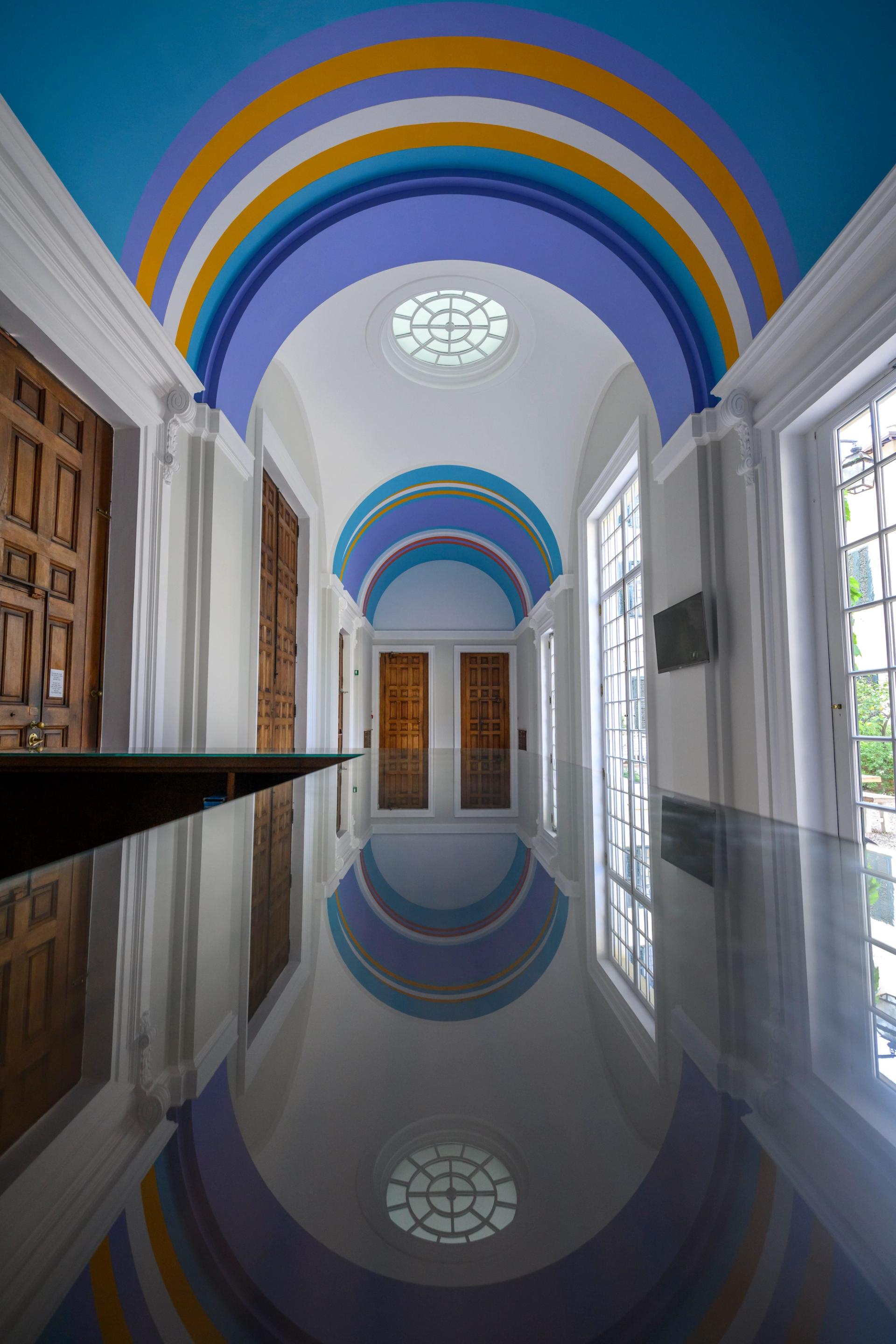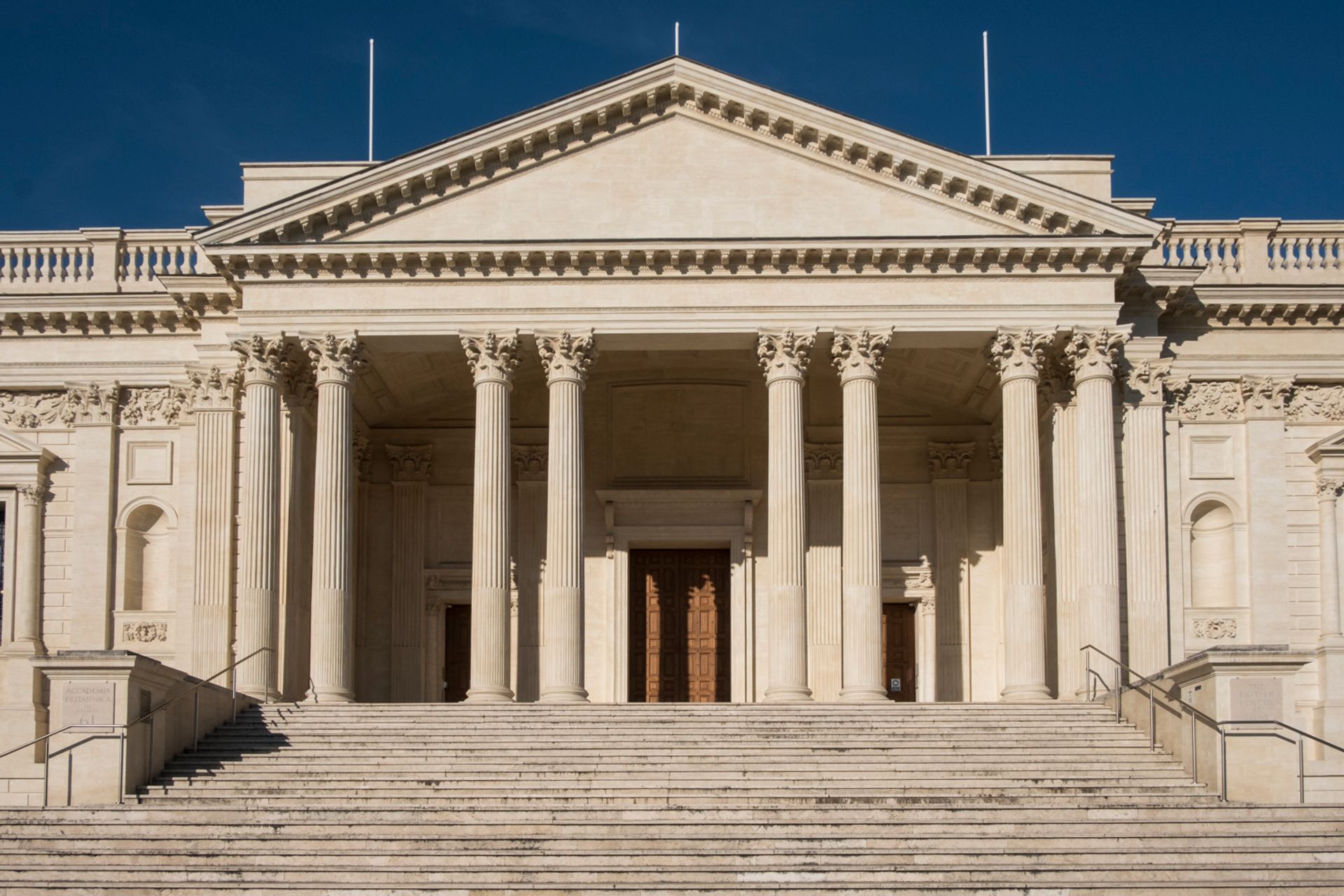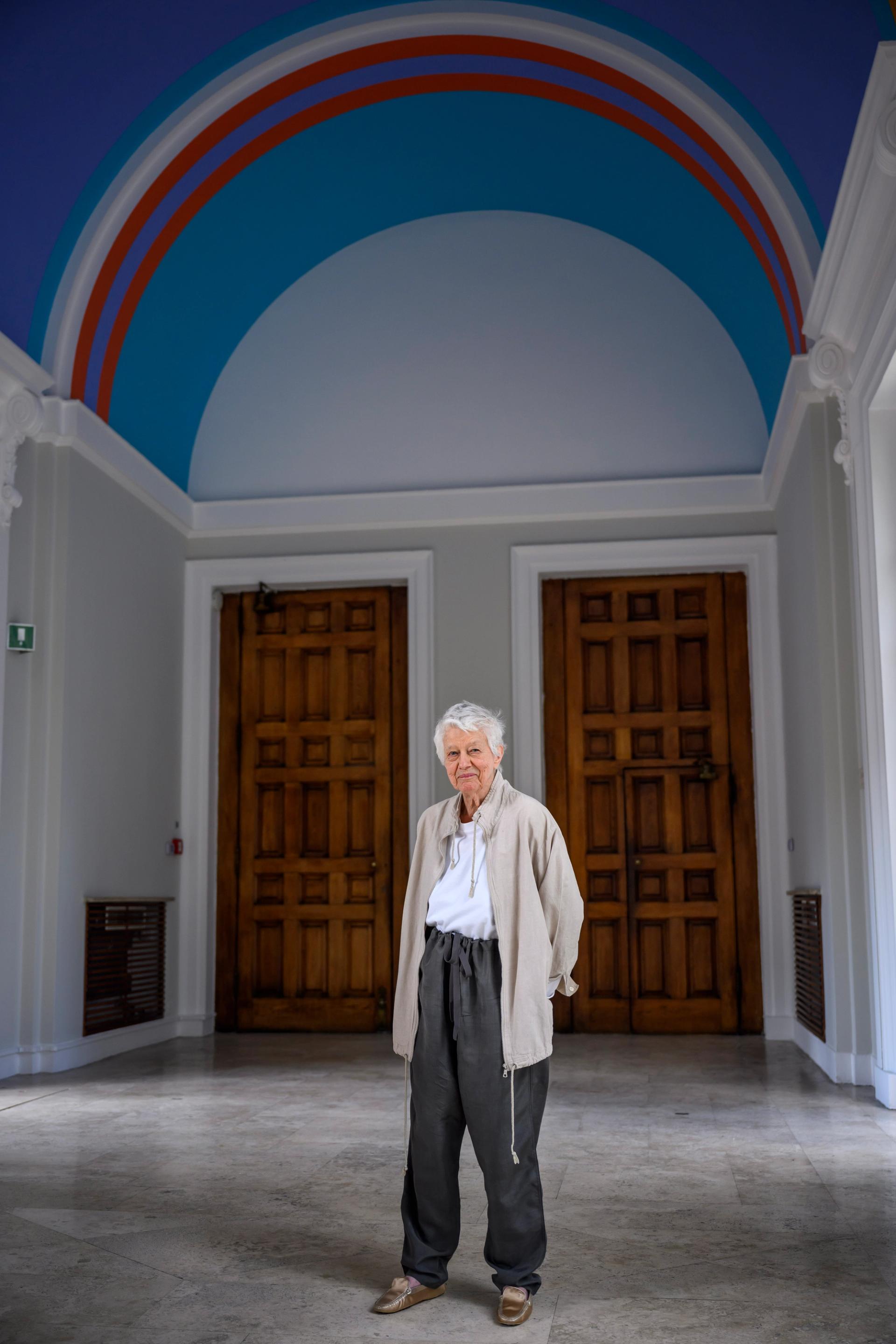At last week's reception for the unveiling of Verve, Bridget Riley's ceiling painting for the British School at Rome, the 92-year-old artist appeared frail yet ebullient. The occasion was a landmark event—the reveal of her first-ever ceiling work, though she has created many monumental murals.
Earlier, Riley had been to visit Michelangelo's frescoed ceiling at the Sistine Chapel in the Vatican and had the privilege of being taken up the scaffold to see "those Mannerist colours" up close, she told The Art Newspaper. There she had experienced the brilliance of "secondary colours"—acid greens, oranges, lilacs—the impact of which is dazzling, disorientating, and emotive. Prior to Michelangelo's radical intervention, the Chapel’s vaulted ceiling had been painted, as was tradition, in the intense blues of the skies and heavens, and dotted with golden stars.

Verve is Riley's first-ever ceiling painting
Photo: Antonio Masiello / Getty Images
Riley's 'blank canvas' consisted of the elegant barrel vaults of the ceiling of Edwin Lutyens's entrance foyer to the British School at Rome, the largest fine arts and humanities research institute outside Britain (established in 1901). The magnificent building was originally created as the British Pavilion for the International Exhibition of 1911, complete with Corinthian-style columns and portico, and subsequently leased to the school from 1916. Since then, the building has been developed and extended to include new wings, a library, and purpose-built design studios. The institution first presented Riley's works in 1996. From 2016, Riley has endowed the school with the Bridget Riley Fellowship, providing a six month-long residency for a young to mid-career artist to develop their work in Rome, with the Villa Borghese gardens and Italy's National Gallery of Modern and Contemporary Art as their neighbours.
The Lutyens ceiling is now boldly striped in bands of radiant colour, resembling those "of the skies", and which come from what Riley terms as her "Egyptian palette". This palette dates to the winter of 1979/80, when she made a stopover to Egypt en-route to Tokyo, while on the final leg of a British Council touring retrospective. There, the extraordinary continuity of colours—from the painted tombs in the Valley of the Kings, to the workers' tombs at Deir-el-Medina—had a profound effect on her, providing the genesis for an "Egyptian palette" of six studio colours: turquoise, blue, red, yellow, green, white, and black, which for Riley assumed a spiritual significance. When her painting Reflection (1982), deploying this palette, was bought by the British Government Art Collection, and displayed in the British Ambassador's residence in Cairo, it could also be seen as serving the purpose of soft power.

The British School at Rome
Photo: Luanna Rigolli, 2022 © BSR
Now, in 2023, Riley's bold ceiling painting exudes a different type of 'soft power'. The two great arcs of colour are not mirror images of one another, but inverted, so that the colours (excluding black) push gently and insistently against each other. Riley described the British School's invitation to create a large-scale work for them as "the beginning of an exhilarating chase. Exhilarating but not without hazard." That hazard is nowhere in evidence as one contemplates the fine play of Riley's "colour acoustics". "Looking up", she says, "the colour of the skies offers a glimpse of nature in her most promising and serene mood".
The process of creating the ceiling, however, was not without jeopardy - though not of the Michelangelo variety. In a famous poem, Michelangelo complained about the physical torture of painting the Sistine Ceiling. One verse relates:
"My stomach's squashed under my chin, my beard's
pointing at heaven, my brain's crushed in a casket,
my breast twists like a harpy's. My brush,
above me all the time, dribbles paint
so my face makes a fine floor for droppings!"
Riley, of course, took no part in the painting of the ceiling herself: her studio undertook the physical work. But her design process is full of mental and technical hazards and demands meticulous attention to perspective, optics, and logistics.
The foyer itself may be what the British School of Rome's director, Abigail Brundin, describes as its "most permeable space" to visitors, but it was not the intended site of Riley’s original commission. She was to decorate a wall in the School's dining hall. This is the hall in which the multidisciplinary community of scholars, archaeologists, artists, and architects (of which I was once lucky enough to be among, in my student days) congregate for meals at the ringing of a bell. The promised wall painting took a year to develop: Riley had painted a full-scale model, before concluding that there were too many difficulties with the room. She contacted Mark Getty, the chair of the school's council, to express a change of heart. "My heart stopped!" Getty relates.
Riley asked for a few weeks to reflect on the matter at her home in Cornwall, south-west England, and then came back to Getty with the suggestion of the ceiling to the entrance foyer. She needed small models of the space, and then she required life-size models of the "difficult" cornices. Getty would occasionally visit Riley's studio, where she would admit that she was struggling with envisioning the design at the height of the vaults. Attempting to visualise the effect, she painted stripes on paper and attached them high on the roof of her stairwell.

Bridget Riley at the British School at Rome
Photo: Antonio Masiello / Getty Images
The ceiling itself was laboriously hand sanded and skimmed by a team of Italian specialist workmen in preparation. Riley's three-person studio team then painted the final work over three weeks, using laser beams from scanners (source by the school's chair of architecture, Bob Allies) to track the lines, and painting the German-sourced highly pigmented colour in between them. This was physically demanding work, requiring physio sessions and cathartic conversations over the communal dinners, invoking comparisons with Michelangelo's experience some 500 years ago.
Riley was making the most of her Roman sojourn. The day after the opening she had arranged a visit to Raphael's The School of Athens (1509-11), in the Vatican's Stanza della Segnatura. One could sense that she was continually absorbing and abstracting the rhythms and cadences of the Italian Renaissance—and its colours. Before heading to Rome, she had been delighted by Donatello’s sculpted relief of The Ascension with Christ Giving the Keys to St Peter (1428-30) in the Victoria and Albert Museum (part of the London museum's Donatello exhibition, but also its permanent collection). And while marvelling at the delicacy of the "squashed" relief in the white marble panel, reminiscent of an Egyptian low relief, but also more like painting than sculpture, Riley had also observed the colours running through the marble itself, where others had just comprehended whiteness.


